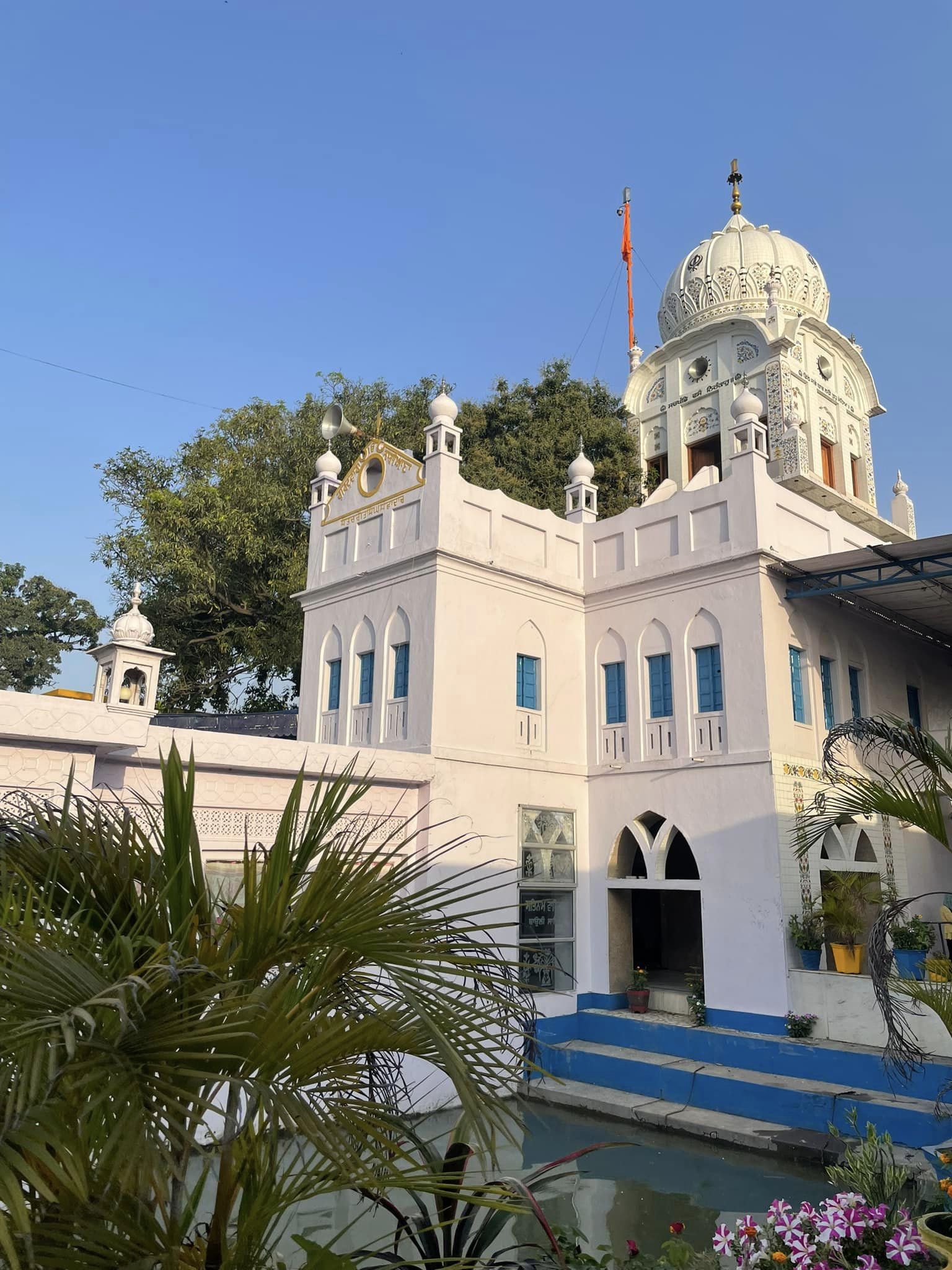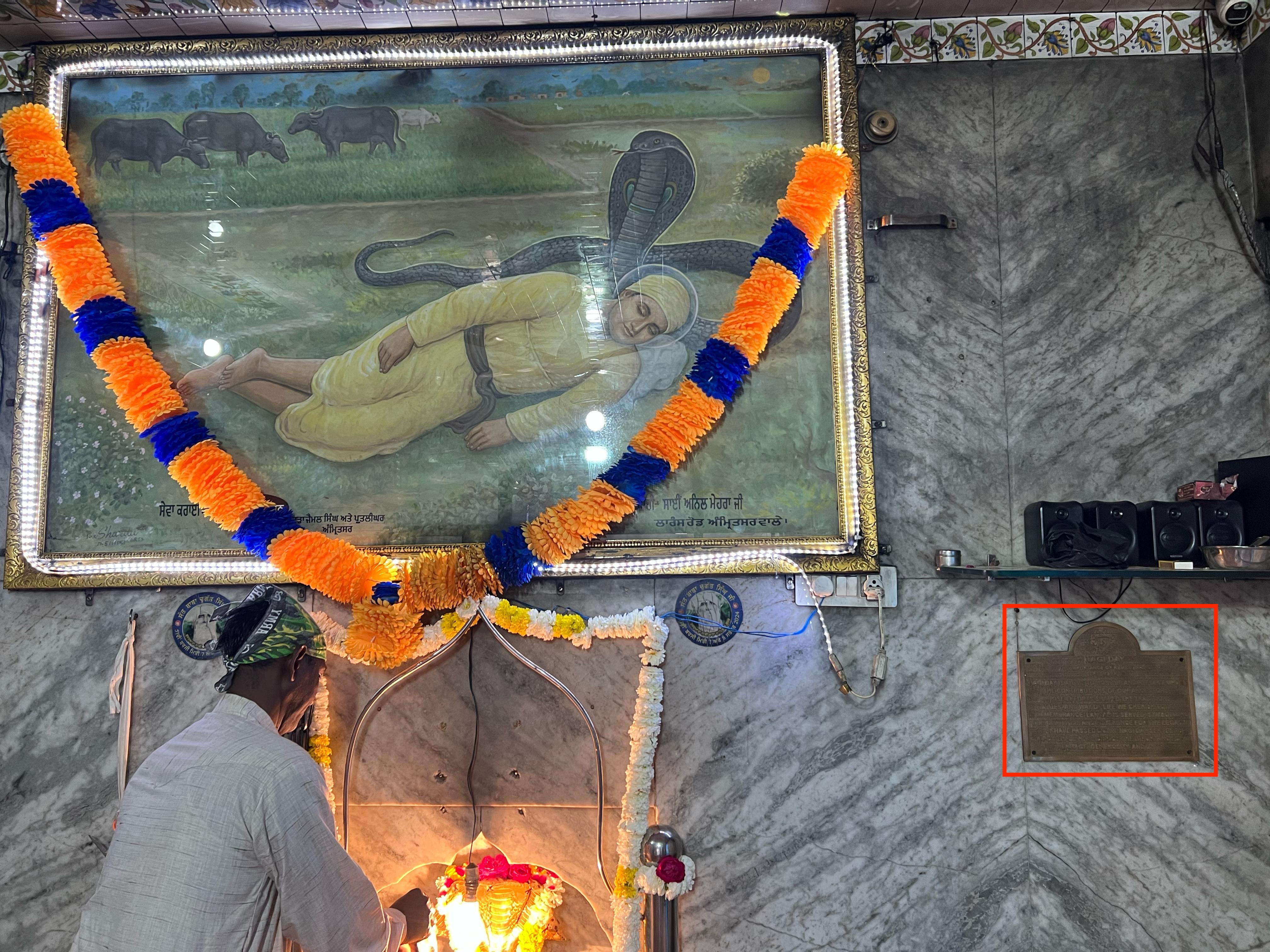Gurudwara Nagiana Sahib: Difference between revisions
m (→Nagi Day) |
m (→Nagi Day) |
||
| Line 25: | Line 25: | ||
In addition to commemorating the past, Nagi Day also looks to the future by setting up a fund to sponsor weddings for the underprivileged. This fund aims to support those who may not have the financial means to celebrate their unions, thereby promoting inclusivity and compassion within the community. By combining the reverence for our ancestors with a commitment to helping others, Nagi Day serves as a powerful reminder of the importance of heritage, generosity, and unity. | In addition to commemorating the past, Nagi Day also looks to the future by setting up a fund to sponsor weddings for the underprivileged. This fund aims to support those who may not have the financial means to celebrate their unions, thereby promoting inclusivity and compassion within the community. By combining the reverence for our ancestors with a commitment to helping others, Nagi Day serves as a powerful reminder of the importance of heritage, generosity, and unity. | ||
A Nagi Day plaque has been installed in the Naag Prayer Room, providing all visitors with insight into the significance of this special day. | A Nagi Day plaque has been installed in the Naag Prayer Room, providing all visitors with insight into the significance of this special day. [https://commons.wikimedia.org/wiki/File:NagiDay%20Plaque.jpg Nagi Day Plaque] | ||
<br> | <br> | ||
Revision as of 15:00, 4 April 2025
Gurdwara Nagiana Sahib is a Gurdwara, or holy Sikh shrine, located in Udoke, a small village near Batala in Punjab, India. The shrine was built by the Sikh saint Sant Baba Chuggat Singh Ji, who served as the first official Sewadar (volunteer) of the shrine.
This is a special place of worship for Nagis' (Nagi clan). The Nagiana Gurdwara is Jathera of Nagis. "Jathera" is a folk religion of Punjab where one worships their ancestors or something related to their ancestors or clan. Jathera was common folk religion among Punjabis prior to Sikh religion regardless of caste. After converting to Sikh religion some Jatheras were turned into Gurdwaras.
Initially only Nagis' used to visit the Gurdwara. September 8th has been chosen as Nagi Day as it is a very significant day for Gurdwara Nagiana Sahib and when most sangat(visitors), many from a far visit the Gurdwara – giving the opportunity to serve langar to tens of thousands.
This is also a place tied to the history of Sri Guru Nanak Dev Ji.
Nagi Day
It is the day to reflect on the contributions our ancestors made to our present life and the cultural, traditions and values they set for us in order to make our lives better.
According to the Vedic scriptures, an individual is born with three debts. The third debt is to one's ancestors is called ‘Pitri-rin.’ This debt is like a mortgage on one's life, but with no liability. It is an attempt to create an awareness of one's duties and responsibilities.
You do not have to believe in this because it is purely based on faith; however, you will agree that it is the responsibility of everyone to keep up the pride of the family lineage by performing actions that promote the good of all. Nagi day is nothing but a reminder of our lineage and duties towards it.
September 8th has been chosen as Nagi Day as it is a very significant day for Gurdwara Nagiana Sahib and when most sangat(visitors), many from a far visit the Gurdwara – giving the opportunity to serve langar to tens of thousands.
In addition to commemorating the past, Nagi Day also looks to the future by setting up a fund to sponsor weddings for the underprivileged. This fund aims to support those who may not have the financial means to celebrate their unions, thereby promoting inclusivity and compassion within the community. By combining the reverence for our ancestors with a commitment to helping others, Nagi Day serves as a powerful reminder of the importance of heritage, generosity, and unity.
A Nagi Day plaque has been installed in the Naag Prayer Room, providing all visitors with insight into the significance of this special day. Nagi Day Plaque
Historical Background
The shrine's main building was built by Sant Baba Chuggat Singh Ji, believed to be the Gurudwara's first sewada. According to Sikh Tradition, this shrine is believed to have historical ties to Sri Guru Nanak Dev Ji.[1]
Gurdwara Nagiana Sahib holds a significant place in history, being intrinsically linked to the spiritual journey of Guru Nanak Dev Ji, the founder of Sikhism. During one of his Udasis (spiritual travels), Guru Nanak Dev Ji arrived at the small village of Udoke. It was here that an extraordinary and miraculous event took place, leaving a lasting impact on the Sikh community. This event involved Guru Nanak Dev Ji's encounter with a snake, known as "nagi" in Punjabi, and it highlighted the Guru's divine nature and the harmony between the spiritual and the natural world.
The Miraculous Encounter with the Snake
Arrival at Udoke: As part of his travels to spread the message of oneness, compassion, and truth, Guru Nanak Dev Ji reached the village of Udoke. During these journeys, Guru Nanak Dev Ji sought to challenge social injustices, superstitions, and ritualistic practices, guiding people toward a direct and personal connection with the Divine.
The Encounter with the Snake: On a particularly hot day, as Guru Nanak Dev Ji sat in meditation, a snake approached him. The villagers were frightened by the presence of this snake, fearing it might harm the Guru. However, what happened next astonished everyone. Instead of acting aggressively, the snake lifted its hood over Guru Nanak Dev Ji to provide him with shade from the harsh sun. This act of reverence by the snake was seen as a miraculous event, demonstrating the recognition of Guru Nanak Dev Ji's spiritual stature by even the natural world.
Architectural Significance
Gurdwara Nagiana Sahib is a beautiful blend of traditional Sikh architecture and local design elements, creating a space that is both inviting and spiritually uplifting. At the heart of the Gurudwara stands a majestic central dome, a key feature in Sikh architecture, symbolizing the oneness of God and the presence of the Divine in all aspects of life. This dome serves as a visual focal point, reminding devotees of the omnipresent nature of God.
Surrounding the central dome are expansive prayer halls, designed to accommodate large gatherings of devotees who come to meditate and engage in communal prayers. The open and spacious layout fosters an environment of peace and reflection, allowing worshippers to connect deeply with their faith.
The Gurdwara’s exterior is adorned with white marble, chosen for its symbolic purity and timeless beauty. This marble, often used in Sikh religious structures, creates an aura of peace and purity, enhancing the spiritual ambiance of the Gurdwara. Intricate carvings and decorative patterns embellish the walls, reflecting the rich artistic heritage of the region and showcasing the devotion of the Sikh community. These delicate details elevate the architectural beauty of the Gurdwara without overwhelming its simplicity.
The courtyards within the Gurdwara grounds provide additional space for community gatherings and moments of quiet contemplation. These open areas allow visitors to pause and reflect, offering a balance between communal worship and personal spiritual reflection.
The architecture of Gurdwara Nagiana Sahib emphasizes humility and devotion, key principles of Sikhism. By maintaining a design that is simple yet elegant, the Gurdwara reflects the Sikh belief in inner spirituality rather than outward displays of wealth or grandeur. This architectural harmony enhances its role as both a spiritual sanctuary and an architectural gem, embodying the peaceful and humble teachings of Guru Nanak Dev Ji.
Role in the Community
The Gurdwara trust also runs a number of charitable services.
Beyond its role as a place of worship, Gurdwara Nagiana Sahib plays a crucial part in uplifting the local community. The Gurdwara is deeply involved in providing charitable services that align with the core Sikh teaching of "Sarbat da Bhala", or the well-being of all. One of its key contributions is offering educational programs, particularly aimed at children from underprivileged backgrounds. These programs help provide the youth with access to education, which in turn supports their personal and professional development.
The Gurdwara also organizes free medical camps, offering healthcare services to those who may not have easy access to them. These camps typically provide free consultations, medical check-ups, and sometimes even medications, addressing a vital community need. In addition, the Gurudwara provides social support to the underprivileged, ensuring that those in need receive help, whether it's in the form of food, shelter, or financial assistance.
By offering these services, Gurdwara Nagiana Sahib not only fulfills the spiritual needs of its community but also takes care of their physical and social well-being, embodying the Sikh values of charity, compassion, and selfless service. These efforts create a strong sense of community, bringing people together and reinforcing the principles of equality and service that are central to Sikhism.
Charitable Hospital
Since 2009 the trust has run a charitable hospital for the poor and needy people of village.
Administration
The administration of the Gurdwara, is taken care by Baba Chuggat Singh Prabandhak Committee, a non-profit institution. Name of the Trust: Baba Chuggat Singh Prabandhak Committee
External Links
- Story of Nagiana Sahib in the words of Baba Kawaljit Singh Ji
- Nagi Day Message - 2019 from Baba Kawaljit Singh Ji
- Nagi Day Message - 2021 from Baba Kawaljit Singh Ji
- Nagi Day Message - 2022 from Baba Kawaljit Singh Ji
- Nagi Day Message - 2024 from Baba Kawaljit Singh Ji
- Guru Nanak Dev Ji
- Nagi Day Flyer The Importance of Remembering


